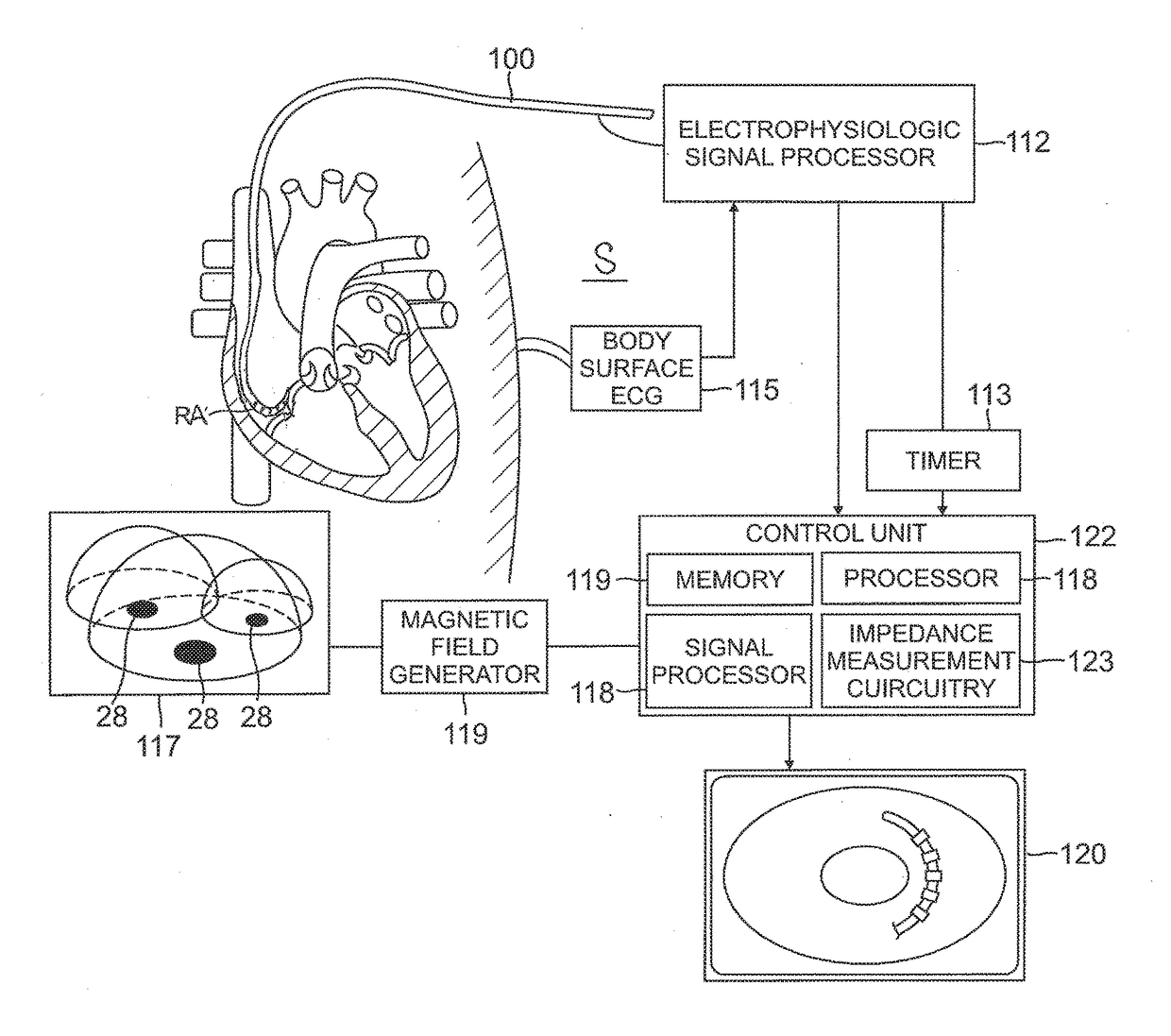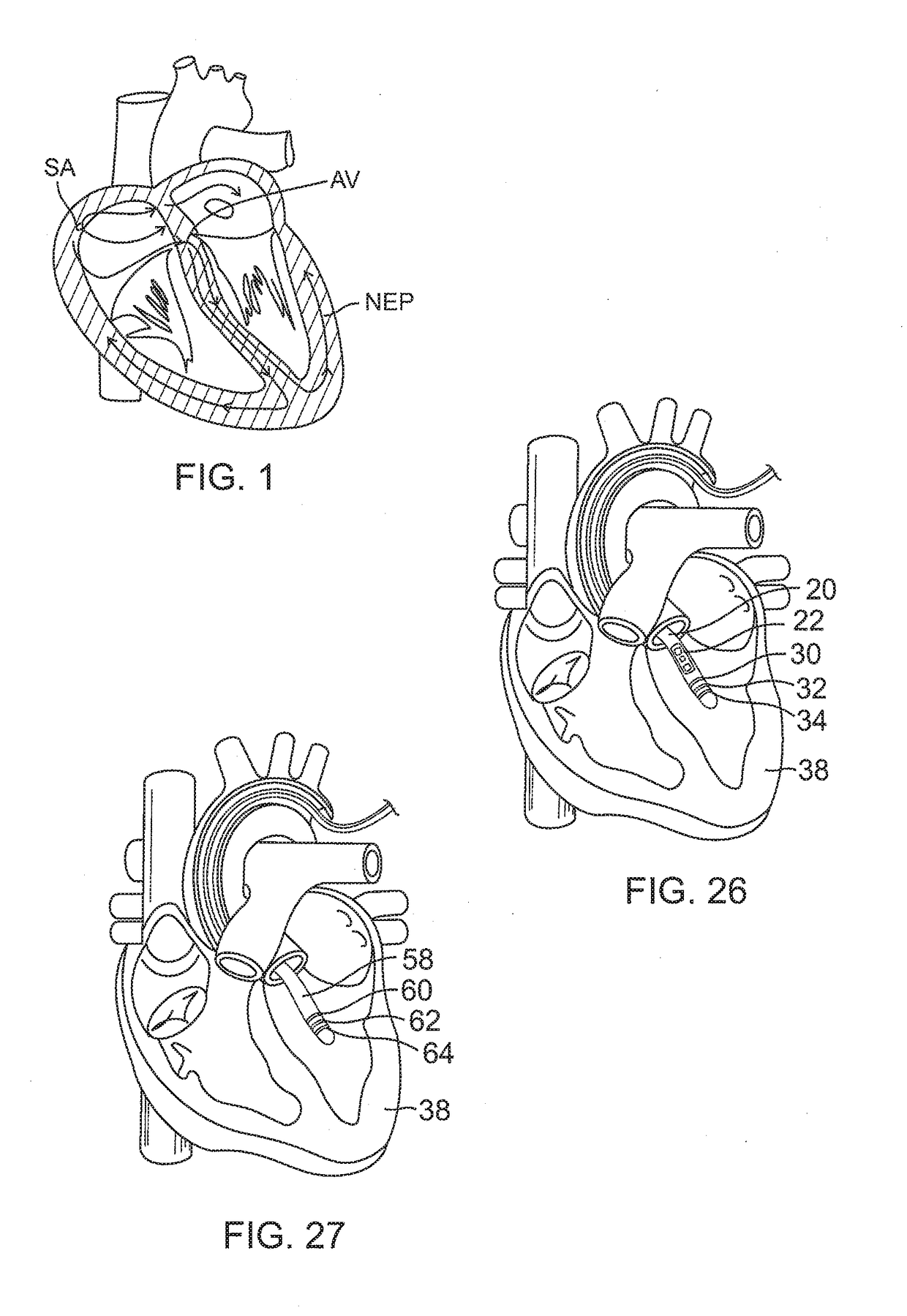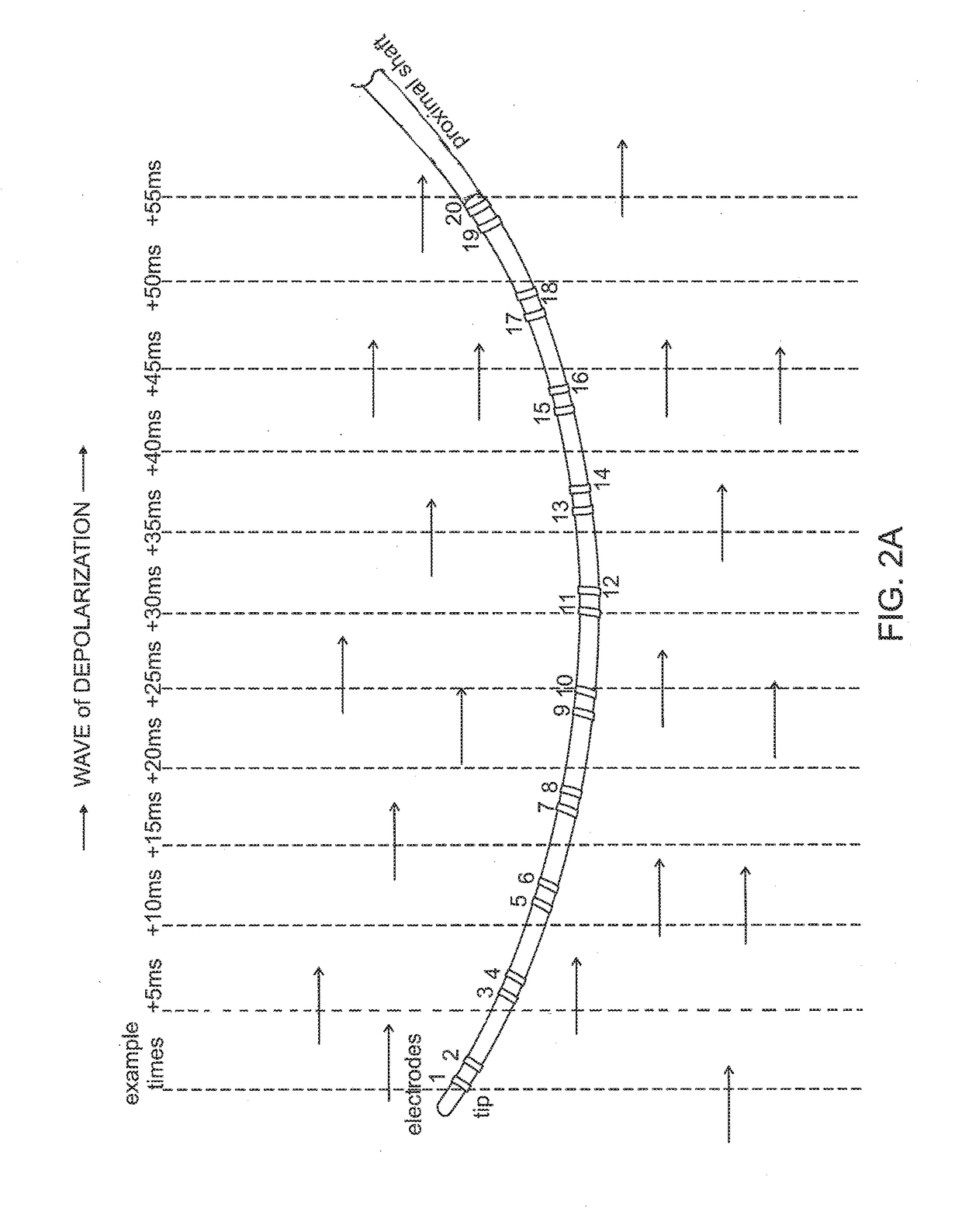System and method for visualizing electrophysiology data
a technology of electrophysiology and data, applied in the field of patient electrophysiology visualization, can solve the problems of not being able to receive another stimulus, not being able to fully recover, and unable to conduct a damaged heart muscle, so as to avoid overlapping sequences of electrode acquisition, facilitate viewing ease
- Summary
- Abstract
- Description
- Claims
- Application Information
AI Technical Summary
Benefits of technology
Problems solved by technology
Method used
Image
Examples
Embodiment Construction
[0096]The present invention is directed to a system and method for real-time visual portrayal of an acquisition sequence of electrodes on a catheter, in particular, real-time visual portrayal of acquisition sequence of electrodes acquiring local activation signals for generating electrograms of a heart. In some embodiments, the visualization of electrode acquisition sequence includes images of the catheter and its electrodes, and visual indicia of electrical propagation along at least an electrical sensing portion of the catheter, including, for example, visual indicia that distinguish acquiring electrode(s) from nonacquiring electrode(s) in real time. In some embodiments, the images include visual indicia of electrical propagation along electrical sensing portions of the catheter, and nonelectrical sensing portion, including, for example, acquiring electrodes and nonconductive tubing extending therebetween. In some embodiments, the visualization of the electrode acquisition sequenc...
PUM
 Login to View More
Login to View More Abstract
Description
Claims
Application Information
 Login to View More
Login to View More - R&D
- Intellectual Property
- Life Sciences
- Materials
- Tech Scout
- Unparalleled Data Quality
- Higher Quality Content
- 60% Fewer Hallucinations
Browse by: Latest US Patents, China's latest patents, Technical Efficacy Thesaurus, Application Domain, Technology Topic, Popular Technical Reports.
© 2025 PatSnap. All rights reserved.Legal|Privacy policy|Modern Slavery Act Transparency Statement|Sitemap|About US| Contact US: help@patsnap.com



